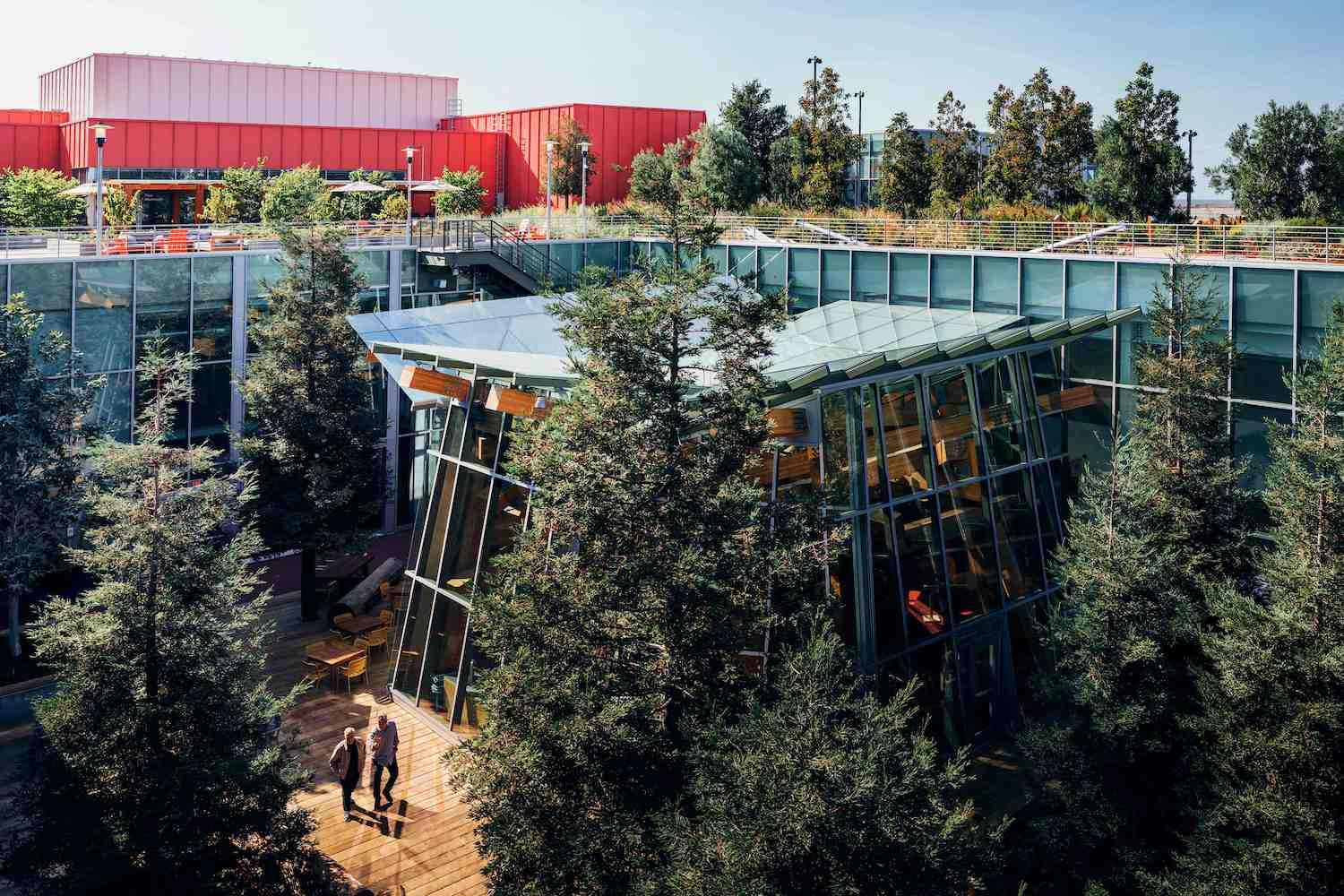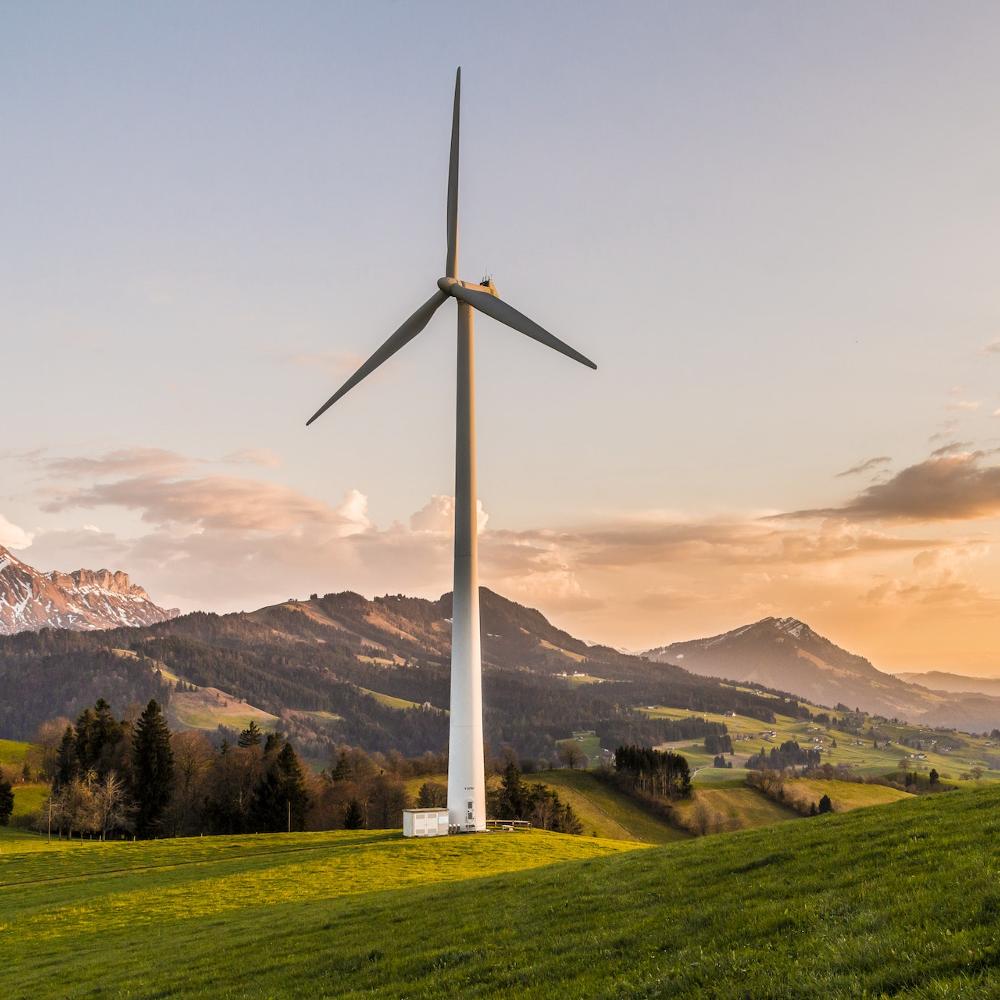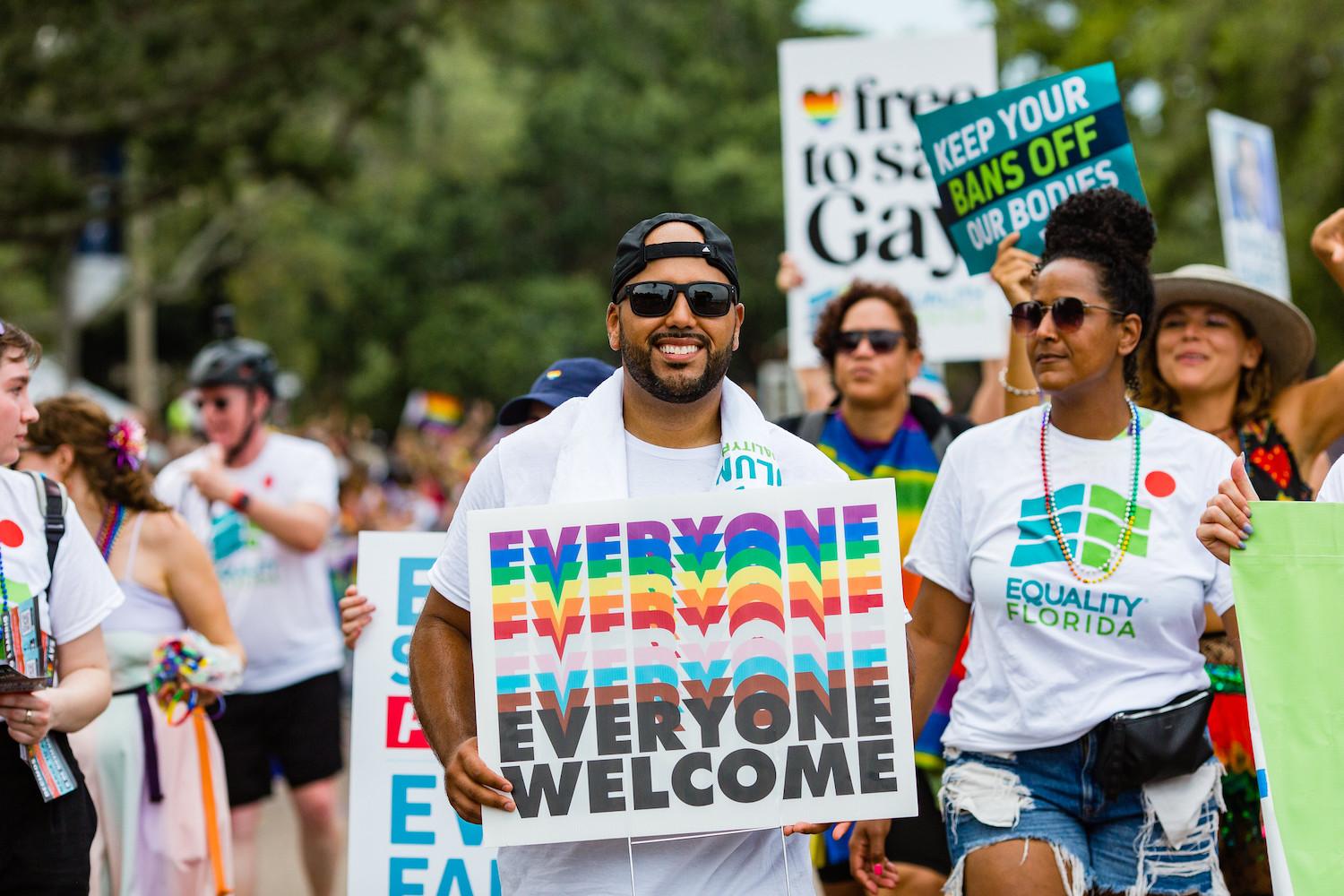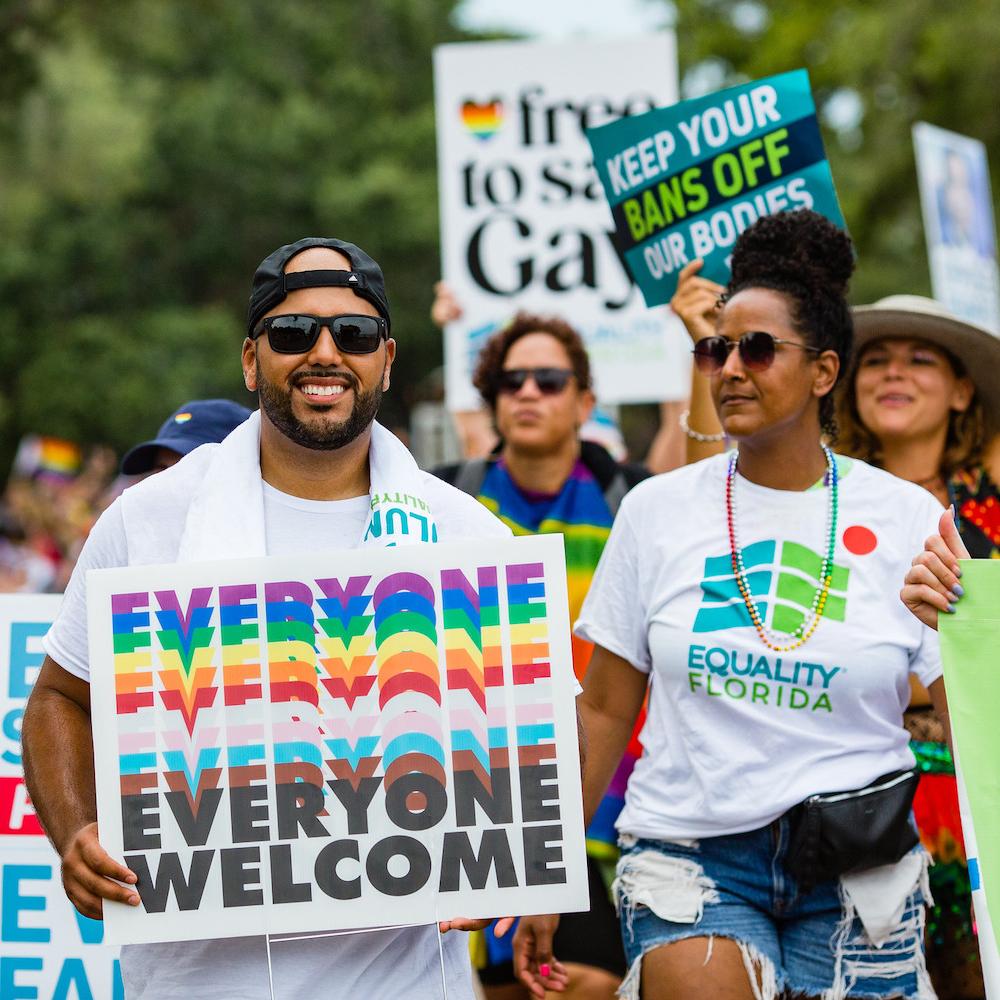Ford Picks Tennessee for T3, the Electric Truck of the Future
BlueOval City, Ford’s new mega-campus in West Tennessee, is taking shape and preparing to build the next-gen electric truck, code named Project T3, in 2025. Site shown as of March 10, 2023. (Image credit: Ford)
Ford staked out its claim to leadership in the electric pickup truck field when it introduced the Lightening F-150 in 2021. Now the company is back with plans to manufacture a mysterious new electric truck, known only by the name T3. One thing is already clear, though: The plan involves bringing 6,000 new green jobs to the red state of Tennessee, and that could put some state officials in a pickle.
The ESG investing fight: Do as I say, not as I do
A pattern has emerged among the two dozen or so states that are trying to thwart the use of ESG (environmental, social and governance) factors in business. In some of these states, high-profile officials rail against ESG investing as a threat to public pension funds, even as their own economic development agencies and legislatures devote considerable public resources to attract new eco-friendly businesses.
Tennessee is one such example. On Feb. 23, Tennessee Attorney General Jonathan Skrmetti joined with counterparts across 24 states in an attempt to block a new Department of Labor rule on ESG investing. The new rule simply clarifies that fiduciaries can voluntarily take climate change and other ESG elements into consideration. It does not require or force them to do so.
The rule is also consistent with precedents established under the 1974 Employee Retirement Income Security Act, yet it still evoked howls of protest from Skrmetti and the other 24 state attorneys general. “The DOL rule sacrifices millions of Americans’ retirement plans on the altar of Environmental, Social, and Governance (“ESG”) investing by placing the radical left’s climate and social agenda above sound financial investment principles,” Skrmetti stated. Many fiduciaries argue the opposite, saying that incorporating ESG screens like climate risk bolster investments for the long term.
Apparently, the Tennessee state legislature did not get that memo about the radical left’s climate agenda. In 2021, Tennessee legislators overwhelmingly approved a $900 million incentive package to bring Ford’s massive new BlueOval City mega-campus to West Tennessee. Described as the “largest investment in the state’s history,” BlueOval City is Ford’s showcase for electric vehicle and battery manufacturing, and it features access to renewable energy. The deal was anchored by a 4,200-acre parcel of state-owned property in Haywood County.
Ford's T3 brings even more ESG to Tennessee
Based on the overwhelming success of the Lightening F-150, Ford’s next electric truck venture is all but certain to attract the media spotlight. That’s what happened last week when Ford highlighted the mysterious new T3 in an update on its progress on BlueOval City, which is to be the future home of the T3 electric truck.
“The electric vehicle and battery manufacturing campus in West Tennessee begins production in 2025, and will be home to Ford’s second-generation electric truck, code named Project T3, and will be capable of producing 500,000 EV trucks a year at full production,” a Ford statement reads.
The company's announcement also suggested — strongly — that the radical left’s climate agenda is in full force at BlueOval City: “BlueOval City is designed to be Ford’s first carbon neutral vehicle manufacturing and battery campus as Ford works to power all Ford plants globally with renewable and carbon-free electricity by 2035."
In terms of carbon-free electricity, a quick look at the state’s grid mix indicates that Ford has its work cut out for it. Nuclear energy could fill part of the gap for now, but solar energy supplied less than 1 percent of the state’s electricity in 2022. Wind resources in the state are also less than optimal.
Rounding up carbon-free heat for the T3 assembly plant will be an easier chore. By the time it begins operations in 2025, the plant will be heated with a combination of geothermal energy and heat recovered from an on-site power station.
Bill Ford, the company’s executive chair and great-grandson of founder Henry Ford, also emphasized that the automaker will build “revolutionary electric vehicles at an advanced manufacturing site that works in harmony with the planet, aligning business growth and innovation with environmental progress.” He said BlueOval City will serve as a model for Ford’s global operations, which certainly puts Tennessee on the map for advancing climate action.
Tennessee loves ESG
When Ford announced BlueOval City in 2021, Tennessee Gov. Bill Lee said that “West Tennessee is primed to deliver the workforce and quality of life needed to create the next great American success story with Ford Motor Company and SK Innovation,” referring to the company that has partnered with Ford to make electric vehicle batteries.
“This is a watershed moment for Tennesseans as we lead the future of the automotive industry and advanced manufacturing,” Lee added.
That certainly sounds like an endorsement of decarbonization, and Ford appears determined to keep reminding the governor of its commitment to fight climate change.
Ford’s website includes a section dedicated to sustainability at BlueOval, in which the company emphasizes the bottom-line motivation behind its plans. “Our vision on sustainability enables our business today, sets us on the pathway for a continued strong business for decades to come, and will help build a better world,” its statement reads.
Ford also takes the opportunity to underscore the urgent need for action on climate change, as well as waste management and the sustainable use of water resources.
The stage is set for more renewables in Tennessee, thanks to ... socialism?
As for the social agenda of the so-called "radical left," Attorney General Skrmetti may want to look locally before casting stones at public pension fund managers.
Tennessee happens to be the home state of the massive Tennessee Valley Authority, a leading example of federal welfare programs aimed at fostering economic development in underserved communities. Headquartered in Knoxville, TVA was established in 1933 as Depression-era program tasked with flood control and reforestation, as well as electrifying rural communities that were unable to attract private-sector investors.
TVA got an early start on renewable energy through its hydropower projects. Though it has also focused on fossil energy, in recent years the agency has been investing more resources in renewables.
The Great Depression also spawned the nationwide Rural Electric Cooperative program, which established hundreds of ratepayer-owned public utilities chartered under a public benefit mission. The Tennessee Electric Cooperative Association notes that its members serve 84 of the 95 counties in the state, accounting for 2.5 million ratepayers. If that’s not socialism, what is?
Images courtesy of Ford
Birds and Bees: Bringing Biodiversity Into the Workplace


Trees and greenery surround the Town Square at Meta's campus in Menlo Park, California. (Image credit: Christophe Wu/Meta)
As companies look to act on climate change, many overlook a crucial and impactful area of focus: preserving biodiversity. Protecting and restoring habitats is vital for restricting emissions and driving climate adaptation. Biodiversity also has a direct impact on most business activities, yet only 31 percent of global companies have made a public biodiversity commitment, according to CDP.
The relationship between business and biodiversity is not one to put aside. Businesses rely on the environment for resources. And the way corporate leaders choose to extract, treat and use those resources has a significant impact not only on people and ecosystems, but also on corporate brand value and resilience for the future.
"Biodiversity is critical to humanity,” said Lauren Swezey, sustainability and landscape project lead for the tech giant Meta. “It supports the health of the planet, and the loss of biodiversity impacts everyone — it impacts our food chains and our health systems.”
For Meta, biodiversity is one of five core sustainability pillars, and completing green projects has been a point of focus. More specifically, Meta is focused on managing the impacts from its data centers and facilities and pursuing opportunities to protect and promote biodiversity in the surrounding ecosystems, according to the company’s most recent sustainability report.
“Everybody should be concerned about biodiversity, and we want to make sure Meta is not impacting [local habitats] through our operations,” Swezey said.
Meta's biodiversity projects foster ecological diversity, protect pollinators and support local nonprofits
Meta has completed multiple biodiversity projects where its facilities and operations are located, with the aim of protecting pollinator habitats and the other vital ecosystems. In 2021, for example, the company installed beehives in its Seattle, Dublin and New York offices and provided roughly 30 acres of pollinator habitat at its data center site in Gallatin, Tennessee. It has also implemented a beekeeping program at its data center in Meath, Ireland.
“About a third of our food is pollinated by honeybees,” Swezey said. “We’re talking about fruit trees, nut trees, squash, strawberries, things we see in the market every day. If we didn't have pollinators pollinating those, we would lose much of our food.”
In addition to protecting pollinators, Meta is focused on ecological diversity. When the company first acquired the property for its headquarters in Menlo Park, California, the grounds were severely polluted and uninhabitable. Meta transformed the property for occupancy and diverse ecological spaces.
Meta’s Menlo Park headquarters now hosts a 12.5-acre green roof, which provides for different habitats such as grasslands, oak savannas and meadows. The green roof is home to 5,300 birds across 50 avian species, according to surveys from the Santa Clara Valley Audubon Society. “We've enjoyed watching butterflies and beneficial insects come to the roof, and we even have a great fox population that found its way on the roof. They're indigenous to the local environment," Swezey explained.
Meta also partners with local nonprofits to protect and promote biodiversity in Menlo Park. The company’s partners include Save The Bay, a nonprofit that restores and protects wetlands in the San Francisco Bay Area, and the San Francisco Bay Bird Observatory, which conserves birds and their habitats. “It’s really important for us to support these environmental organizations that are helping to improve the current conditions of the area and support wildlife,” Swezey said.
Looking ahead: Challenges and opportunities for the tech sector to promote biodiversity
Beyond restoration efforts, business leaders who aim to truly promote biodiversity are challenged to identify and address every touchpoint in which their companies’ operations may harm ecosystems. For tech companies like Meta, that increasingly includes user behavior on their platforms.
For example, to prevent illegal wildlife trafficking, Meta has developed policies and standards to prohibit selling live animals on its platforms or publishing content that facilitates poaching and selling endangered animals.
Further, restoring habitats is no easy task. Biodiversity is a complicated subject as it encompasses many different facets, from animals to land use to water. Due to the vast array of considerations, many different groups in an organization have to monitor and facilitate biodiversity priorities.
“It’s not something you can accomplish in a year, in a couple of years,” Swezey said. “It’s something that is ongoing. We’ll continue to develop and we’ll continue to expand our partnerships, including biodiversity projects and water stewardship projects, and those collaborations will increase our opportunities.”
This article series is sponsored by Meta and produced by the TriplePundit editorial team.
Invest in Climate Tech the Right Way to Make Money While Cutting Carbon


Spending on climate tech has increased dramatically over the past five years, with more than a quarter of venture capital outlays going to the sector in 2022, according to PwC and Pitchbook. At this point, it has largely superseded spending on a closely related category: clean tech.
This shift toward mitigating climate change directly — as opposed to a broader aim of reducing general pollution as with clean tech — has dramatically enhanced industry’s ability to adopt sustainable net-zero and low-carbon technologies. This has led to a significant reduction in the greenhouse gases (GHGs) that cause climate change, as well as a much cleaner and healthier environment for the Earth’s 8 billion people.
Climate tech investment challenges
It will be extremely difficult to replace fossil-based hydrocarbons with low-carbon energy and industrial technologies within the time frame needed to mitigate the worst potential impacts of climate change. A big part of the challenge is that energy and industrial technology shifts require much more capital, take far longer to develop, and do not yet have an established history of attractive investor returns traditionally produced by more proven areas, such as information technology and pharma biotech.
This limited history of attractive returns has shown some signs of improvement over the last few years. Climate tech exits reached at least $114 billion in 2021 — with 104 U.S. companies exiting, a 70 percent year-over-year increase. The advent of special purpose acquisition companies (SPACs), which have enabled climate tech companies to go public with much more capital than was previously available to the sector, has furthered the trend.
SPACs did unfortunately become part of an over-hyped cycle which resulted in multiple companies trading at unsustainable valuations and, ultimately, leading to significant losses. However, on the positive side, capital continues to flow in at all levels in support of climate tech companies.
Questions for investors
For investors, the big question is: As capital flows into the sector, is it being deployed in the most effective way in order to sustainably lower harmful GHGs while also providing significant returns to investors? In other words: Is the investor community creating a framework for sustainable, attractive returns while supporting companies that will reach a scale capable of making a difference in the fight against climate change? Or is it producing a lumpy hype cycle that could culminate in poor results — much like Cleantech 1.0, but at a much bigger loss?
The answer is simply that we don't know yet. Further, we should be concerned about the risk of creating another bubble. Without strong discipline and thoughtful investment management, it could happen. If it does, capital markets and climate change mitigation will suffer.
Responsible climate tech investment
How can climate tech investors avoid another bubble and ensure that climate tech becomes a sustainable asset class? Here are some recommendations.
Get the technical roadmap right. Can a given technology truly deliver on its claims? Naturally, there is risk in any new technology, but drilling down to really understand what is needed to reach scale takes significant time and effort. A talented entrepreneur knows how to lay out a detailed roadmap. Climate tech investors can be genuinely helpful to entrepreneurs while protecting their capital by asking the hard questions.
Talk to the experts. A thorough evaluation of what it will take to reach commercial scale is necessary to reduce mistakes. It’s important to engage veterans of the industry who understand how it works for in-depth discussion. This does not mean that you need to accept their views unconditionally. But it will help guide your thinking and inform any advice you might offer to the startup you are looking to invest in.
Build the right board and advisory board. Corporate governance must leverage expertise at multiple levels of technology development and commercial deployment in order to be effective. It is a common mistake to not have enough knowledgeable advisors actively involved in the critical decisions that support organizational growth and key capital expenditure decisions. Working through challenges in climate tech requires enough expertise around the table to ask those difficult questions that ensure you’re steering the ship as well as possible.
Keep an eye on the road ahead. Spend significant time thinking through how capital will be staged over the next couple of rounds. The last thing you need is for your portfolio company’s commercial-scale capital to be unavailable due to risk reduction targets that were not enough to qualify. This challenge is less likely than it was pre-2017 due to the availability of significant growth capital and the push for climate tech solutions among major industry players. However, reaching scale is always challenging and generally underestimated by most investors.
Develop multiple exit strategies. While its likelihood has significantly improved in recent years, exiting is still among the biggest challenges in climate tech because of the time it takes to bring technologies to market. Climate tech business growth is much slower than e-commerce and other faster-moving consumer investments. This is why different exit points — such as full or partial — need to be part of a strategy to reduce risk and provide optimal outcomes for a given investment.
The bottom line
Multiple challenges exist for climate tech investors in this ever-changing economic, political and social environment, but there are also extraordinary opportunities. With a thoughtful investment strategy, planning and discipline, those opportunities will likely last for decades given not just the magnitude of the climate crisis, but also the amount of capital needed to support and scale solutions. Additionally, many climate tech solutions have the potential to significantly improve human health and deliver products that are functionally better and more sustainable.
So what’s needed to tap this extraordinary convergence of planetary well-being and investment success? Get the technical road map right. Talk to the experts. Build the right board and advisory board. Keep an eye on the road ahead. And develop multiple exit strategies.
Image credit: Pixabay / Pexels
'Anti-Woke' Campaigns Aren't Pushing the Public Away From DEI


Rising backlash against "woke" policies and ideologies has spread into corporate America over recent months, as a subset of right-wing politicians and pundits set their sights on environmental, social and governance (ESG) considerations in business.
Adding more confusion to the discourse, no one really knows what "woke" means in the context of these critiques — not even the critics. For example, the author of a new "anti-woke" book, focused on how LGBTQ and gender equity policies are poisoning America's youth, went viral earlier this month when she couldn't define the term on a live broadcast with Briahna Joy Gray of The Hill.
With no clear agreement on what characterizes an idea or position as "woke" or "anti-woke," the term is fast becoming a catch-all that can include everything and anything, provided it's something a given speaker doesn't like. In finance, for example, critics have used the term to decry ESG screens like climate risk being used in investment decisions, saying they unfairly disadvantage fossil fuel interests. On the social side of things, some have criticized corporate efforts to promote diversity, equity and inclusion (DEI). The most recent examples include anti-woke crusaders erroneously blaming DEI "distractions" for everything from the Ohio train derailment to the collapse of Silicon Valley Bank.
With critics growing louder and the "woke" target constantly on the move, some business leaders are getting nervous, saying they've changed the way they talk about ESG and DEI issues to avoid being caught in the crossfire.
But they may want to rest easy, as recent polling shows the anti-woke campaign isn't really catching on among the public. The latest evidence comes from survey results released this week by the nonpartisan research institute NORC at the University of Chicago, with funding from the Wall Street Journal.
Survey says: Anti-woke campaigners are far from busting DEI in business
While Wall Street Journal editor Aaron Zitner framed the findings as evidence that Americans have departed from once-cherished values like "patriotism and religion," the dataset has more to say — particularly around issues of diversity, equity and inclusion.
For example, on “businesses taking steps to promote racial and ethnic diversity,” 70 percent of respondents said U.S. society “has been about right” or “has not gone far enough,” while 28 percent feel it has "gone too far," according to responses gathered earlier this month.
Likewise, less than a third of respondents feel the the U.S. has "gone too far" with respect to schools and universities promoting diversity. Only 12 percent chose the "gone too far" option with respect to promoting equality between men and women, while 29 percent said the same about "accepting people who are gay, lesbian, or bisexual" and 43 percent said the same about "accepting people who are transgender."
Zitner of the Journal discussed how these responses break down across party lines, information that is not available in the public dataset, and his reporting does reveal a partisan divide. For example, just over half of Republicans said society has "gone too far" with respect to businesses promoting diversity, compared to 7 percent of Democrats. More than 60 percent of Democrats said diversity efforts haven’t gone far enough, compared to 14 percent of Republicans.
Self-proclaimed Republicans were also more likely to say society has "gone too far" in accepting LGBTQ people and promoting gender equity, compared to 15 percent or less of self-proclaimed Democrats, with Independents falling in between.
While these findings reflect different mindsets across the political aisle, they hardly represent a vast sea change away from DEI issues. Even as right-wing politicians and pundits continue to hammer the "anti-woke" point home, the NORC poll results indicate only about half of Republican voters feel strongly about DEI having gone too far. If the apparent target audience is split on the issues anti-woke campaigners are promoting, while others disapprove or are ambivalent, that's far from a desired outcome.
This information on public sentiment confirms market research released last week by Just Capital, which indicates that companies following best-practice diversity disclosures outperformed those that didn’t by 7.9 percent over the trailing one-year period ending in 2022. In an associated public poll, 92 percent of U.S. adults said it is important for companies to promote racial equity in the workplace.
"It is always unwise to take any single poll as gospel," Pulitzer Prize-winning Washington Post columnist Eugene Robinson pointed out in his commentary on the research. "That said, the NORC survey is worth paying attention to because it appears to confirm what we see and hear all around us: Attitudes and language evolve. Americans my age remember a time, for example, when the LGBTQ community was widely shunned and closeted. My grandchildren, when they reach voting age, will wonder why people ever thought sexual orientation or gender identity was such a big deal."
The evidence is mounting: "Anti-woke" campaigns against ESG are falling flat
The NORC findings also build on another effort to assess if and how companies should align with social and environmental issues given anti-woke and anti-ESG pushback.
Conducted by Just Capital in partnership with Omidyar Network, the Ford Foundation and the Harris Poll, the qualitative research included eight U.S. focus group discussions broken into Republican, Democrat, Independent and young Americans (ages 18 to 24).
Across the board, respondents supported businesses serving all of their stakeholders, including employees, customers, communities and the environment, rather than solely their shareholders, according to the findings released last month. Respondents across party lines also indicated they support ESG screens to reduce investment risk, even if they don't call it ESG or aren't familiar with the term.
The findings are compelling, but the focus groups were conducted in December 2022. That seems like a world away in the context of the 24-hour news cycle and rising political noise ahead of the 2024 presidential election, leaving many who read the results in February to question whether people still felt that way or if the steady anti-woke drumbeat was starting to change their minds.
NORC's more recent research points to that not being the case — at least not substantially. And again, it builds on and supports what others have found. In another poll released last month by Christopher Newport University’s Wason Center for Civic Leadership in Virginia, for example, a majority of respondents across party lines said they support public schools teaching how racism impacts American society and oppose a ban on Critical Race Theory, even as CRT has drawn particular ire from the anti-woke set.
"Some commentators, focusing on the poll’s findings about patriotism, religious observance and our national 'character,' have suggested they see a retreat from what defines Americans," wrote Robinson of the Washington Post. "But to me, the NORC poll shows Americans advancing in the right direction, toward inclusion rather than exclusion. It says most Americans don’t believe they’re living in a dystopia of 'wokeism.' They’re just living in the here and now — not in the discriminatory, exclusionary past."
Image credits: David Vives and Oren Elbaz via Unsplash
A New Corporate Push for LGBTQ+ Rights, Starting in Florida


Attendees march in a pride parade in St. Petersburg, Florida, in June 2022. (Image credit: CityofStPete/Flickr)
The corporate voice has been quieter on LGBTQ+ rights over recent years, even as hundreds of new state laws attack gender-affirming medical care along with education, entertainment, literature and other areas of LGBTQ+ expression. Now the tide could finally be turning. The Walt Disney Co. plans to host a major rights conference in central Florida this September, and dozens of high-profile U.S. brands are expected to attend — from Apple and Amazon to Uber and Walmart.
Silencing the LGBTQ+ voice
The Out & Equal conference hosted by Disney could mark a turning point for a number of reasons. Chief among them is the choice of location. Disney could have hosted the conference at one of its resorts in a state where LGBTQ+ rights are not under attack by Republican-dominated legislatures. The company operates three resorts in California, for example.
Instead, it took the fight to the dragon’s mouth. Florida Gov. Ron DeSantis has been courting former President Donald Trump’s “MAGA” voters in a bid to raise his national profile in preparation for a White House bid in 2024. In addition to publicity stunts that grab the national media spotlight, DeSantis has garnered a reputation for mirroring the legislative policies of the authoritarian government in Hungary, aimed at silencing the voice of political opposition.
On LGBTQ+ issues, Florida took the lead in repression when the state legislature passed the notorious “Don’t Say Gay” law, which took effect on July 1, 2022. The law was ostensibly aimed at shielding the very youngest students, from kindergarten through third grade, from premature discussions of sexual identity. However, the law opened the door for the DeSantis administration to ban gender discussion all the way up through high school. As reported last week by the Orlando Sentinel, the expansion is an administrative procedure that will not require new legislation.
Disney finds its voice on LGBTQ+ rights
Somewhat ironically, the 2022 version of the Don’t Say Gay law set the stage for Disney to bring the LGBTQ+ conference to Florida. When the legislation was working its way through the Florida state legislature last spring, Disney failed to take a public position against the bill until employees took to social media in protest. That finally motivated then-CEO Bob Chapek to explain his position at the company’s annual shareholder meeting on March 9, 2022.
“Chapek explained that Disney leaders were opposed to the bill ‘from the outset, but we chose not to take a public position on it because we thought we could be more effective working behind-the-scenes, engaging directly with lawmakers — on both sides of the aisle,’" NPR senior producer Elizabeth Blair reported. At the shareholder event, Chapek said the company was "'reassessing our approach to advocacy — including political giving in Florida and beyond,'" NPR reported.
Corporate DEI takes the fight to Florida
DeSantis clapped back almost immediately with new legislation aimed at stripping Disney of its autonomy to operate the sprawling Disney World complex. The new law was widely seen as punishment for the company’s failure to toe the DeSantis line.
The high-profile punishment seemed to achieve its desired effect, leading other corporations to hesitate to speak up for LGBTQ+ rights. DeSantis also turned up the pressure last month with the passage of another law establishing a Republican-controlled board to oversee municipal services within the Disney World district.
However, it appears the “Disney Effect” had a rather short lifespan. The Miami Herald reported news of the upcoming LGBTQ+ rights conference last week, less than a month after DeSantis established the new oversight board.
“The Walt Disney Company will host a major conference promoting lesbian, gay, bisexual and transgender rights in the workplace in Central Florida this September, gathering executives and professionals from the world’s largest companies in a defiant display of the limits of Florida Gov. Ron DeSantis’ campaign against diversity training,” the Herald reported.
The conference is an extension of Disney’s ongoing relationship with the workplace advocacy group Out & Equal, which is organizing the event. Dozens of “iconic American companies” are sponsoring the event, the Herald reported, to be held at the Walt Disney World Resort from September 11 to 14 with more than 5,000 projected attendees.
On its website, Out & Equal lists scores of high-profile U.S. corporations as partners, including Disney in its top “Titanium” class along with Dell, Bank of America, Uber, JPMorgan Chase and the global information services firm Experian.
The Out & Equal partner list encompasses a broad range of corporate activity and top employers, including the defense contractors Boeing, Northrop Grumman and Raytheon Technologies, which are listed in the Gold level, along with HP in the Platinum level and Lockheed Martin in the Bronze level. The organization also counts John Deere, Cracker Barrel and Stanley Black & Decker among its partners, along with ExxonMobil and other fossil energy companies generally associated with Republican-leaning political persuasions.
Location, location, location — and timing
Bringing scores of corporate leaders to an epicenter of legislation-empowered hate and bigotry is a big step forward for Disney, which has been struggling to recover from last year’s debacle.
As for DeSantis, despite his efforts to out-perform Trump on culture issues, he has a long way to go before catching up to Trump in the polls. Though not a formal candidate yet, DeSantis has been visiting early-voting states including Iowa and New Hampshire. Polling this week shows him running competitively with Trump in those two states. However, in national surveys he runs far behind Trump, who continues to suck oxygen out of his presidential ambitions.
Despite his legal troubles, Trump could still draw the winning card in the primary election. And if DeSantis prevails, he will face an uphill battle from disillusioned Republican voters along with Democrats and Independents in the general election.
It remains to be seen whether or not corporate voices will join voters in pushing back against bigotry and hate during the next presidential election, but there is a good chance they will. Disney and Out & Equal plan to bring the LGBTQ+ conference back to Florida again in September 2024, just in time for the presidential election cycle to heat up to the boiling point.
Mandatory Biodiversity Disclosures Are Coming, But Don’t Panic: Steps You Can Take to Prepare


An endangered red panda, native to the Eastern Himalayas and other high mountains.
The Taskforce on Nature-related Financial Disclosures (TNFD) released the fourth beta version of its risk management and disclosure framework today. This is the final beta framework before the full release for market adoption slated for September 2023.
“The TNFD is a market-led, science-based, government-backed initiative which aims to create a robust and global framework for organizations to assess, manage, and ultimately disclose their impacts, dependencies, risks, and opportunities related to nature,” said Carolin Leeshaa, TNFD taskforce member and national lead of natural capital and biodiversity at KPMG Australia.
The calls for biodiversity disclosures have grown substantially in the last year from consumers, investors and multilateral organizations as more research comes to light. For example, World Economic Forum data suggests that half of the world’s GDP is moderately or highly dependent on nature, and further biodiversity loss will pose serious risk to our means of production.
How does biodiversity loss impact businesses?
Nature provides critical services for business. Natural services like pollination, water purification, soil health regeneration and regulating climate are essential to all of the world’s economic activity.
For example, “Australia is looking to get to AUS$100 billion (US$66.5 billion) of farm gate output by 2030, and about two-thirds of this target is highly dependent on honeybee pollination,” Leeshaa explained. “The bees are working for free; we’re not going to send them an invoice.”
As such, declining global bee populations, largely tied to intensive farming practices and global temperature rise, pose financial and systemic risks to the global economy. “This is why it is important to recognize and account for the full value of the services nature provides, so we can make better, nature-smart decisions,” Leeshaa said.
What are the drivers of biodiversity loss?
Biodiversity loss is linked to five key drivers, which are largely caused by human influence and impact. The most significant driver is land use change: Taking natural lands like forests and converting them to use in agriculture or urban development is pushing the lion’s share of biodiversity loss. The other drivers include climate change, pollution, overexploitation of resources and invasive species.
What’s the state of global regulations?
Announcements and agreements made at the COP15 U.N. Biodiversity Conference in Montreal in December 2022 have accelerated the global regulatory outlook on biodiversity. A global biodiversity framework (GBF) was adopted by 196 member states, which includes four goals and 23 targets. The TNFD is working to be closely aligned with the global framework.
One of the main highlights of the global biodiversity framework is the ‘30x30’ target, whereby 30 percent of the world’s land needs to be protected by 2030. Also of importance is Target 15, which requires that signatory governments move to mandate large companies and financial institutions to regularly disclose their biodiversity impacts, dependencies and risks.
The wheels are in motion, and although reporting at this point is still voluntary, businesses should prepare now for the eventuality of mandatory biodiversity disclosures. “The scale and momentum around nature and biodiversity has been quite remarkable," Leeshaa said. "What took climate maybe 10 to 15 years to achieve, nature has done in 10 to 15 months."
What can businesses do to prepare for mandatory biodiversity disclosures?
“Educate and build awareness with your boards and your executive management around integrating nature into governance, strategy, risk management and asset allocation decisions," Leeshaa suggested. "You need to assess how nature actually impacts your business, and how your business impacts nature."
The TNFD has created a handy approach for businesses to begin their biodiversity journey and pilot the disclosure framework. It’s called LEAP (locate, evaluate, assess, prepare) and acts as a four-step process. The first step is to locate your assets and activities that are near high-risk ecosystems. Evaluate means conducting a biodiversity impact and dependencies assessment in these areas. Then, assess the material risks to your organization, and finally prepare to disclose and report your findings.
Climate reporting typically uses a carbon dioxide equivalent as a key metric. In biodiversity, there are many different metrics to use, complicating the process. Biodiversity disclosures also require supply chain investigation, much like Scope 3 carbon emissions, and businesses should begin having conversations with their suppliers to find out what nature-related data they can access.
The complexity of biodiversity reporting may scare some organizations away, but for this exact reason businesses need to come to grips with the topic. “Biodiversity reporting is coming, it’s more complex than climate, and it represents a material risk," Leeshaa said. "That’s why it’s important to get started earlier rather than later."
Image credit: Pixabay
Energy Tech Company Steps in to Help Stabilize the Grid for Renewable Power


Flipping the switch to renewable-fed grids comes with challenges for power companies and operators. That’s because current grids were developed around fossil fuels with steady output and the ability to ramp up on demand. But renewable energy sources like wind and solar don’t work that way. This presents an opportunity for innovators, of which Reactive Technologies is one. The company specializes in technologies that help utilities transition to renewables by empowering grid operators with the measurements and data they need to keep the power flowing.
“The ongoing global transition to net-zero carbon involves massive build-out of renewable energy sources like wind and solar farms, which often replace carbon-intensive fossil fuel generators,” Frederico Rauter, chief revenue officer at Reactive Technologies, told TriplePundit. "While these no- and low-carbon renewable energy sources have many benefits in addition to curbing climate change, they also introduce new challenges."
A patchwork of old and new grid technologies
“With renewable energy set to become the top source of the world’s electricity by 2025, power grid operators globally are struggling to manage the fluctuating energy supply associated with renewables — which, if not accommodated for properly, can destabilize the grid and, in the worst-case scenario, lead to supply interruptions and blackouts," Rauter explained.
Vox reported on the inefficiency of the United States’ current grid architecture back in 2018 — noting an increase in disturbances and calling for an overhaul designed around new, renewable technology. Unsurprisingly, that hasn’t happened. Instead, the transition to renewables looks more like new technologies jimmy-rigged to an old grid. That’s where innovators like Reactive come in.
“Traditionally, system operators have relied on fossil fuel power stations to help maintain system stability in the face of a sudden imbalance or disturbance, such as a fault,” Rauter continued, detailing how such plants can match the grid’s needs in real-time and create stability in inertia. “Inverter-based resources like solar, wind, and battery storage are connected to the grid with power electronics that do not inherently provide inertia and system strength, increasing the risk of system instability and supply interruptions. As coal-fired power plants retire and are replaced by renewables, operators have had to review the way they manage and monitor the grid to avoid risks.”
The hidden supply of renewable energy causes confusion for operators
The problem with patching renewables into a grid built for the steady flow from fossil fuels is that the supply from renewables is hidden from transmission and distribution operators, who need that information to estimate inertia and system strength. Within the power sector, inertia refers to the energy stored in power generators at a given time, while system strength measures the power system's ability to maintain the correct voltage across the grid.
“Without an accurate view of inertia or system strength, operators have in some cases been blind to potential security risks, and in others, were forced to overspend on balancing services, cap renewables integration, or even curtail their output in lieu of fossil fuels,” Rauter explained.
In his view, transmission and distribution operators are central to the energy transition and hold the key to making sure it is successful on both technical and economic fronts. But they need the right tools to be able to gauge outputs from renewables.
Tech to the rescue
Last year, McKinsey estimated that the transmission sector needs to expand by 60 percent by 2030 to keep up with the growth that’s required in renewables. But a hundred years' worth of development is unlikely to occur in such a short timeframe. The hope is that new tech will help relieve some of that burden and make the most out of the grid we’ve got as improvements are made.
“Our technology directly measures inertia and system strength by sending pulses of power through the grid, which are measured and processed by Reactive’s grid edge measurement devices and cloud computing platform,” Rauter explained. “Using this system, operators can accurately map any deviations in levels of voltage and electrical frequency, allowing an almost instantaneous response to keep the grid in balance. With GridMetrix in place, operators around the world can reduce the risk of grid instability and bring more renewables online, safely and cost-effectively.”
Reactive's GridMetrix system is being used by transmission and distribution operators in the U.K., Italy, Germany, Australia, New Zealand and Japan. With it, Rauter said that operators are going to be able to more efficiently utilize renewable energy while protecting their system’s stability. “Our ability to measure transmission, distribution and demand level inertia will provide unprecedented transparency and allow operators globally to meet the challenge,” he said.
Image credit: Talal Hakim/Pexels
Giant Seaweed Blobs Are the New Normal


The record-setting “blob” of seaweed headed for Florida’s coastline is getting a whole lot of attention. But beaches in the Sunshine State and across the Caribbean have seen record-setting amounts of the stuff for at least five years in a row.
Sargassum seaweed blooms are not new either, though only in recent decades have they grown large enough to study by satellite. Naturally, the phenomenon is linked to human activity. And while the problem may appear small compared to so many others, it doesn’t just threaten spring breakers’ good times. The masses of dead seaweed that wash up on shore threaten marine ecosystems, as well as the local tourism industry, the livelihoods of those working in the industry, and the health of those tasked with cleaning it up.
Too much of a good thing
The Great Atlantic Sargassum Belt stretches 5,000 miles, from the Gulf of Mexico to West Africa. But it’s not one solid stretch of seaweed, Rick Lumpkin, director of the physical oceanography division at the U.S. National Oceanic and Atmospheric Administration (NOAA), told the Associated Press. “It’s a dynamic, constantly changing set of pieces of this large mass. It’s not one big continuous blob heading straight to South Florida.”
Sargassum seaweed starts out in the Sargasso Sea — a gyre in the Atlantic Ocean where four currents meet — and spreads out from there. It supplies marine life with food, habitat and a place to breed. Fish, turtles and seabirds all benefit from the tangled brown algae, making it an important part of the ecosystem.
But the plant's intrinsic benefits are being lost in the harm done by its proliferation. “It comes in in such large quantities that it basically sucks the oxygen out of the water and creates what we refer to as dead zones,” Dr. Brian Lapointe, a research professor at Florida Atlantic University’s Harbor Branch Oceanographic Institute, told CNN. “These are normally nursery habitats for fisheries … and once they’re devoid of oxygen, we have lost that habitat.”
Seaweed blooms: A stinky, expensive mess
On land, sargassum is a nuisance to beachgoers, a scourge for the tourism industry and a potential health hazard. Though the majority of what is floating along the belt will never wash ashore, what does amounts to piles of stinking, rotting vegetation that releases toxic hydrogen sulfide and often brings sea lice, jellyfish and other pain-inflicting critters with it. Hydrogen sulfide can cause respiratory issues as well as burning in the eyes and nose. It also smells like rotting eggs, a huge turn-off for tourists. The algae contain arsenic too, which limits how it can be repurposed.
And it's difficult and expensive to remove, with Miami-Dade County alone spending millions on cleanup every year. Caribbean nations spent $120 million in 2018 alone, and hotels in the Mexican state of Quintana Roo spent up to $90,000 per month to get the stinky stuff off their beachfronts in 2021. In Barbados, it’s taking “1,600 dump trucks a day to clean the beaches of this seaweed to make it suitable for tourists and recreation on the beaches,” LaPointe said.
Many causes require many fixes
What’s caused this sudden increase in sargassum over recent years? A number of factors are at play, including ocean acidification from increased atmospheric carbon dioxide levels, a 45 percent increase in nitrogen levels since the 1980s, and warming ocean temperatures worldwide. The growth is also cyclical — meaning the worse it gets, the worse it will get.
Much of the increase in ocean nutrient levels is likely due to fertilizer and sewage runoff. Some experts, including Jeff Carbeck, CEO of the consultancy 10EQS, have recommended upgraded fertilizers to help combat the problem. Still, with so much of the issue tied up in CO2 levels and increased temperatures, at least one necessary fix is being held hostage by the lack of real progress on the larger climate crisis.
A new normal
Experts don’t appear too enthusiastic that the sargassum will be brought back into balance. “This is the new normal, and we’re going to have to adapt to it,” Lapointe told Scientific American.
Like so many other symptoms of our planet in crisis — from sinking islands to worsening turbulence — this new normal should have each and every one of us questioning whether what humanity has built is even worth it. Ultimately, each of these problems will continue to worsen until the assault on our planet by unfettered profit-driven interests is brought to an end. Is allowing it to continue really worth losing so much of what makes the Earth a beautiful, amazing place to live?
Image credit: PNUD México / Flickr
Regenerative Agriculture Standards Can Address Consumer Confusion While Bolstering Farmers


Public perceptions around food are changing. As more people understand the impact their food choices have on the environment, many consumers are eager to support those who produce food that is not only better for their health, but also for the planet.
But with the proliferation of green certifications, labels and marketing claims, consumers are uncertain about sustainability generally. And the lack of transparency and consistency around these claims has left consumers confused and distrustful about which agricultural products are truly sustainable.
Raising awareness of regenerative agriculture practices
In the world of food production, regenerative agriculture has been touted as an untapped solution to the climate crisis. Using a holistic approach to farm management, regenerative agriculture aims to preserve the health of the soil, water, livestock, biodiversity and people of the farm for generations to come, while also serving as a critical means of carbon sequestration.
Unlike other designations, such as certified organic — which, in countries around the world, comes with legal frameworks — there are no regulatory or legal definitions for regenerative agriculture. Scientists and farmers widely acknowledge it includes production practices like cover-cropping, low-till farming, and rotational grazing that improve ecosystem health while sequestering carbon, as well as utilizing nature to its best extent.
Many consumers have heard about the benefits of regenerative agriculture. But with no set standards or measurements for impacts and outcomes, the farmers and ranchers utilizing these practices are working to understand the ecosystem and adapt their approach without set guidance. Meanwhile, brands are challenged to educate and engage a consumer base that may be confused or even skeptical.
Lessons from New Zealand, a regenerative agriculture principles pioneer
While the concept and practice of regenerative agriculture is spreading around the world, New Zealand is one country that has long utilized these practices. Thanks to the island nation’s advantageous climate and landscape, coupled with the local culture and commitment to sustainability, many farmers and ranchers have been following the practices of regenerative agriculture for decades, and are on a path of continuous improvement.
“Regenerative practices like rotational grazing caught on here in New Zealand in the 1960s,” said Pat Maher, CEO of Atkins Ranch, a network of family-run ranches raising grass-fed lamb. “All of our farmers operate through a rotational grazing model. What we're working on now is actually making sure that we can verify those farming systems.”
The standardization and labeling of regenerative practices would help farmers and ranchers implement and market these practices to their customers. “Ensuring regenerative standards and the environmental outcomes can be independently audited and verified is critical to creating trust between farmers and consumers,” said Nick Beeby, general manager market development at Beef + Lamb New Zealand.
Further, regenerative standardization at the global level would amplify the efforts of the farmers and ranchers who have been utilizing these principles for generations. Many of the ranchers within the Atkins Ranch network, for example, are fifth- and sixth-generation farmers whose families have been raising livestock on their land for over 150 years.
“When we talk about these standards with our farmers here in New Zealand, it's not that we are asking them to do anything different — they've been implementing regenerative practices and focusing on continuous improvements for a long time,” Beeby continued. “Regenerative verification means we're now asking them to prove it and the environmental outcomes.”
Why set the standard for regenerative agriculture?
Standardization and communication of regenerative practices and outcomes will help both consumers and producers better support the products of this system, but that’s not the only benefit of setting a verified standard. Defining regenerative agriculture has positive implications for the entire food supply chain, as stakeholders from retailers and manufacturers to consumer brands set their own environmental, social and governance (ESG) goals.
An industry-wide consensus on regenerative agriculture would not only allow retailers and brands to provide their customers with the sustainable products they’re looking for, but it would also help them to fulfill their own sustainability commitments.
Further, standardization and consistent labeling will ensure that the term “regenerative” can no longer be misused as a vague and greenwashed marketing term. By eliminating customer confusion and amplifying the sustainable practices of farms like those in New Zealand and others around the world, standardization can help make regenerative agriculture a global movement.
While industry-wide standardization is necessary to elucidate these practices to retailers and consumers, the establishment of these standards inherently presents a critical challenge: Regenerative agriculture, at its core, is regional — each farm must adapt to its own landscape and environment under the guidance of the farmer who knows what is best for the farm and the land.
However, this inherent regionality ultimately helps define regenerative agriculture for what it truly is: a local, community-based solution to a global climate crisis. Some voluntary verification programs, such as the U.S.-based Savory Institute’s Land to Market, aim to take local distinctions into account by measuring desired outcomes, rather than requiring the very same practices to be adopted on every farm.
Atkins Ranch was one of the first companies in the world to join Land to Market, and is working with the New Zealand government to get more farmers verified.
"This project will help open up a new opportunity for more of our farmers to demonstrate the good work they're doing,” Steve Penno, director of investment programs at New Zealand’s Ministry for Primary Industries, said in an October statement. “And with a few tweaks, they can be rewarded for it.”
This article series is sponsored by Beef + Lamb New Zealand and produced by the TriplePundit editorial team.
Image courtesy of Beef + Lamb New Zealand
Who Pays For Climate Change? Where Countries Falter, Corporations Fund


Climate refugee Miriam, whose village was destroyed by flooding in 2022, walks to school in her new home in the Afar region of northern Ethiopia. (Image: ©UNICEF Ethiopia/Raphael Pouget via Flickr)
At the COP27 climate talks in November, world leaders agreed to establish a loss and damage fund to help developing countries cope with the impacts of climate change. But it will be years until the fund is up and running — leaving many questions unanswered, chief among them: Who pays for the climate crisis?
While the responses to this question often place the financial onus of climate change on the global superpowers (China, the U.S.) that have contributed the most environmental harm, those powerful nations have consistently failed to accept this charge. Nations in the Global South have, by and large, contributed little to climate change, yet face the most serious consequences — including more frequent and severe natural disasters like drought, intense heat, and extreme storms. As the leading contributors to climate change drag their feet, the window for action continues to shrink, and blameless millions pay the price of the Global North’s pollution.
Climate Neutral, a nonprofit dedicated to addressing this disparity, leverages corporate funding to finance sustainable projects in the world's least developed countries. In this way, corporations can circumvent the global gridlock preventing true action on climate change. The nonprofit also provides corporations a chance to move beyond empty promises and truly begin to right their own environmental wrongs.
“The pressure that we're trying to exert is pressure on companies because consumers, at least say, they care about climate change,” said Austin Whitman, CEO of Climate Neutral. “But they have very few ways to engage with companies directly and press companies to do more. So, if we can create the expectation that companies are doing their part to mitigate their emissions, there will be an increase in the flow of capital into projects.”
Climate Neutral challenges corporations to go beyond words and take aggressive action to reduce global emissions by 2030. To earn the nonprofit’s certification, a company must demonstrate that it is taking steps to reduce future emissions, while also paying the full price for current emissions.

Rich nations can "export low-carbon technologies" to decarbonize the developing world
Rapid industrialization in an under-developed country can create intense environmental harm. But how can a country that already polluted the world through its own industrialization 200 years ago prohibit another nation from doing the same thing today? When it comes to polluting, rich nations are essentially telling poorer nations, “do as I say, not as I do,” and that isn’t very persuasive.
“There is some transfer of wealth that's necessary to account for the fact that the economic costs are being borne initially, largely, by countries that have not caused the problem,” Whitman said.
For decades, the Global South has called on the North to pay reparations for the crimes of colonialism, which prevented development and stole the natural resources that would have funded such development. If rich nations don’t want poorer nations to develop in an environmentally harmful way, they ought to invest in sustainable infrastructure and practices in these underdeveloped nations.
“All the major sectors, they can be used just as well in India as they can in the U.S.," Whitman said as an example. "I think it's our job to export low-carbon technologies to really allow them to skip past that phase where the carbon intensity of the economy grows significantly before it starts to level off and then decline. We've got a pretty impressive system here in the U.S., and that knowledge can be exported, and is being exported.”
Climate Neutral understands that the urgency of the climate crisis demands action, not bureaucracy. Challenging corporations to pay for pollution and invest in the environment may not completely solve the climate crisis, but it is a fantastic way to get powerful players to put their money where their mouth is.
“This is one of the many, many dynamic aspects of the puzzle. We're not starting necessarily in the perfect spot,” Whitman said, “but that doesn't mean that we shouldn't start.”
Image credits: ©UNICEF Ethiopia/Raphael Pouget via Flickr and Climate Neutral